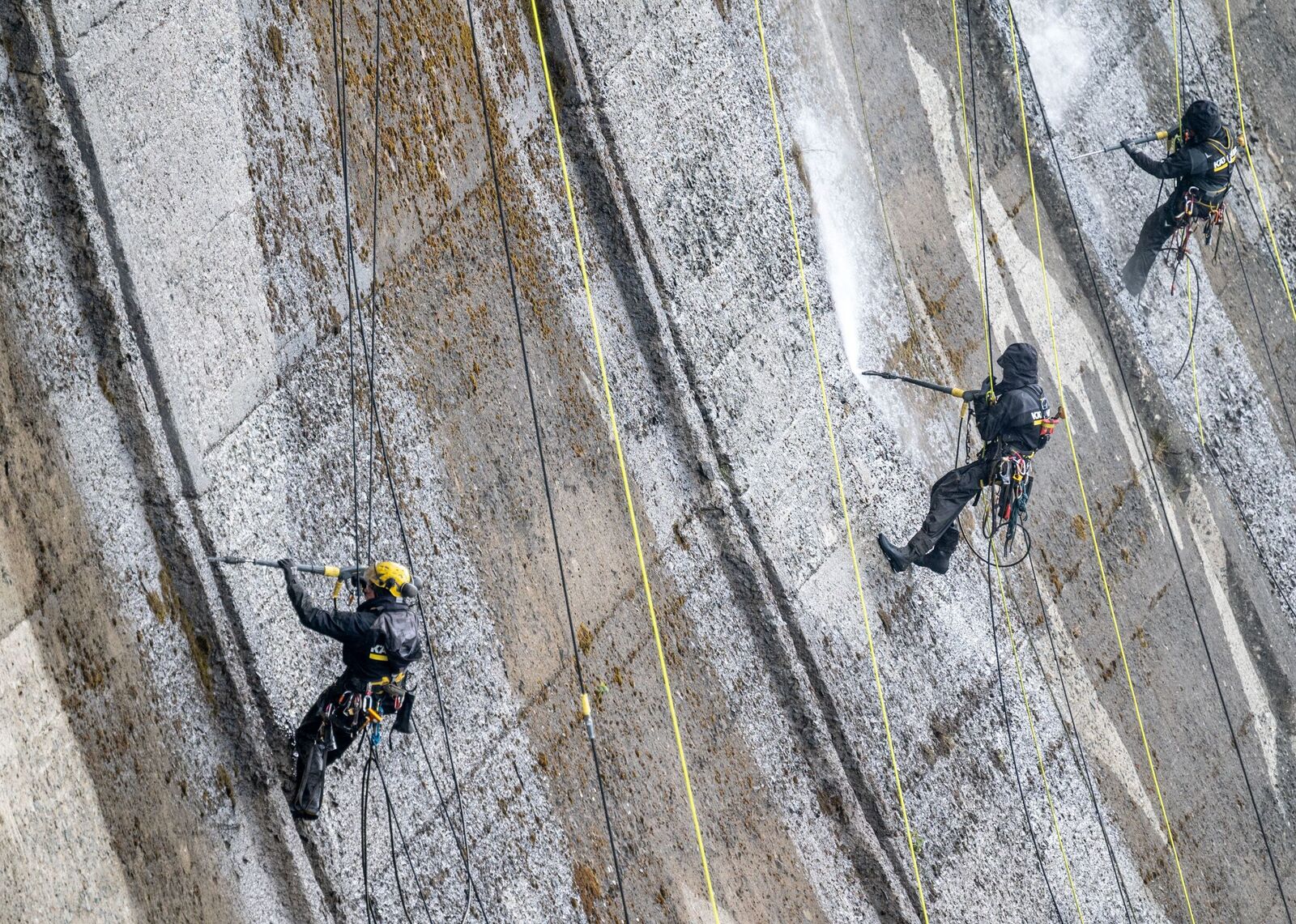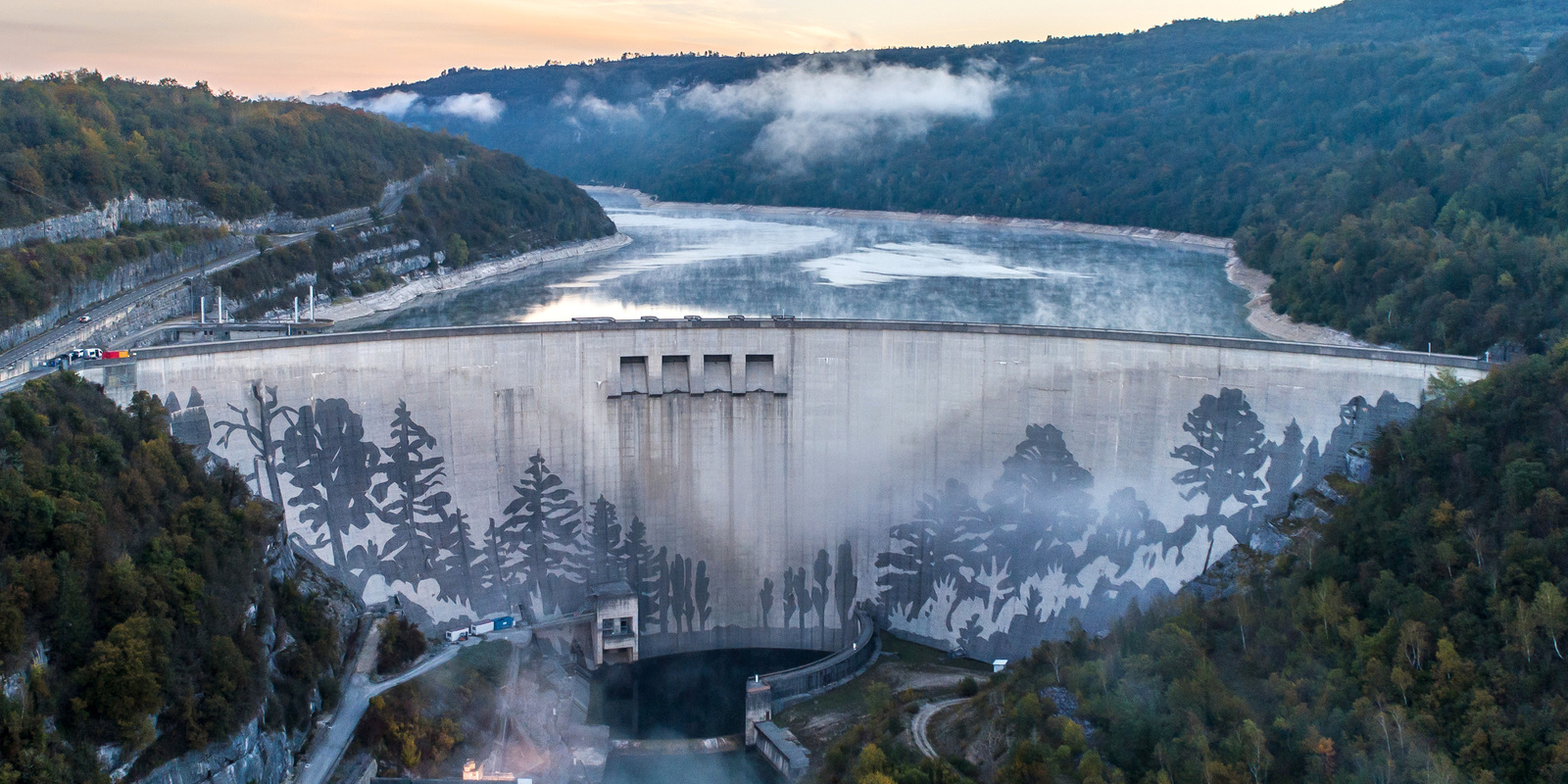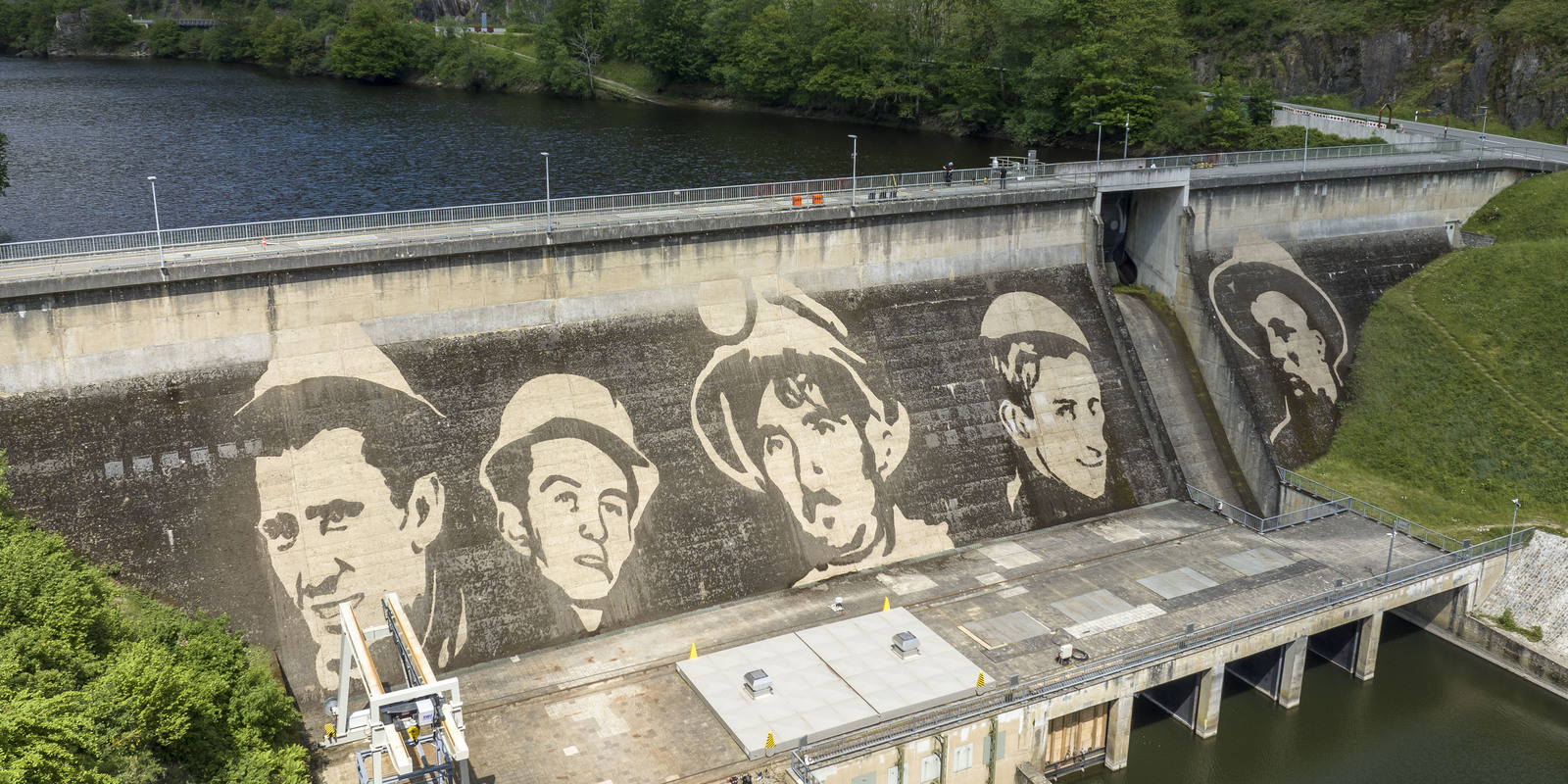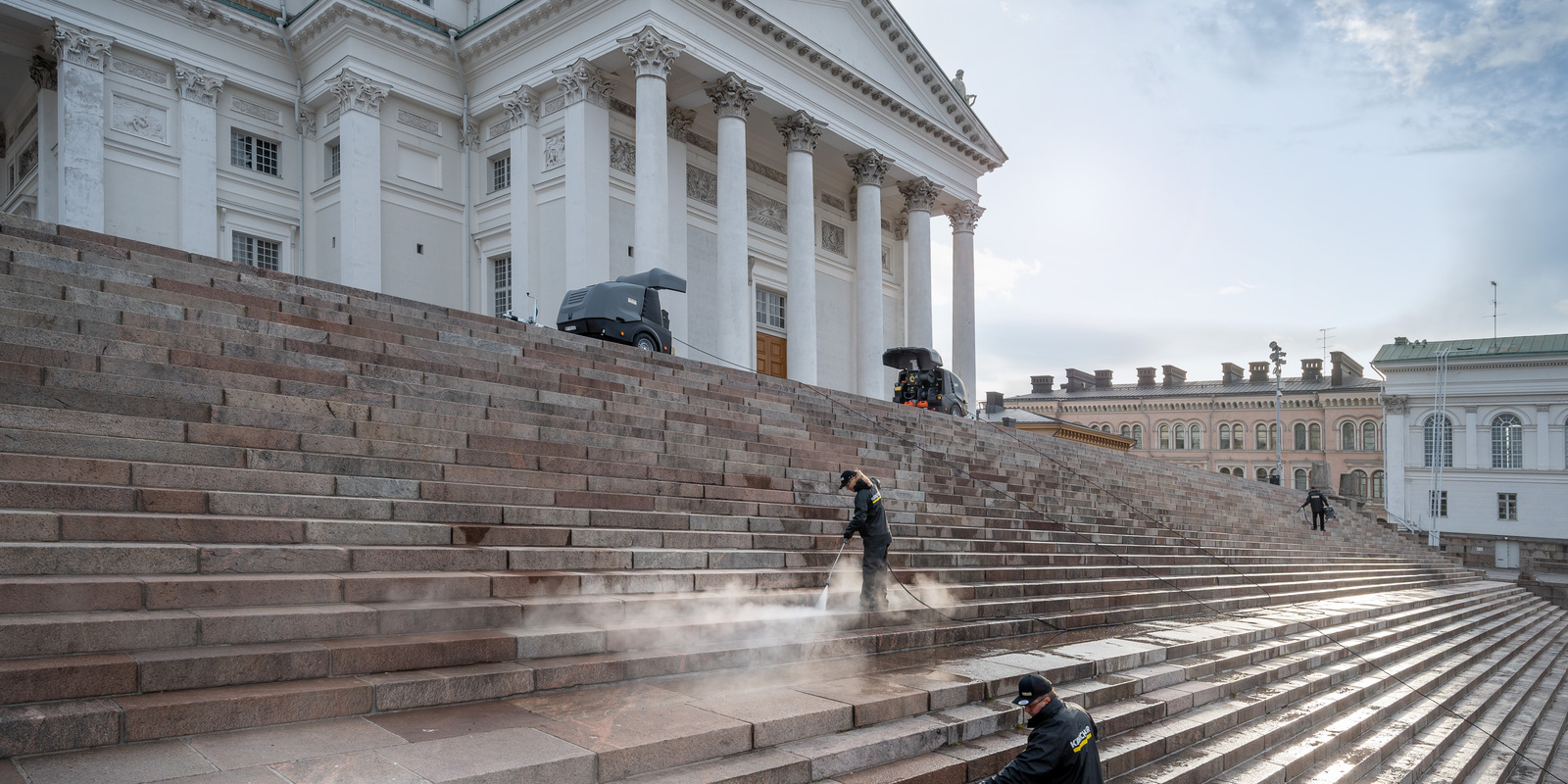MONUMENTAL WORK OF ART ON GERMANY'S HIGHEST DAM WALL
As part of its cultural sponsorship, Kärcher cooperated with the artist Klaus Dauven and created a reverse graffiti artwork on Germany's highest dam wall, the Rappbodetalsperre.
A very special work of art has been created at the Rappbode Dam near Elbingerode in the Harz Mountains: In a cooperation with the family-owned company Kärcher and the Saxony-Anhalt Dam Authority (TSB), the artist Klaus Dauven has created a 40,000 m² so-called reverse graffiti on the surface of the 400 meter wide and 100 meter high dam wall.
Kärcher and Klaus Dauven have been collaborating on smaller and larger art projects for over 15 years. The best-known works include drawings on dam walls in Germany, France, Luxembourg, Japan and South Korea. In Germany, a reverse graffiti was created on the Eibenstock dam (2012) near Zwickau and one on the Oleftalsperre dam in the Eifel (2007).
Through the targeted removal of dirt with Kärcher high-pressure cleaners, a drawing was created from the contrast between the cleaned and uncleaned surface, showing butterflies of the “small kingfisher” species found in the region. The artist and a team of industrial climbers led by Kärcher abseiled down in a spectacular way.
Kärcher had put together a team of specialists to apply the drawing: These included industrial climbers who abseiled down from the top of the dam and placed around 1,100 ecomarkers on the polluted surface. They were supported by surveying technicians who used laser technology to mark the relevant points on the wall from the ground. In the second step, the climbers used high-pressure cleaners to remove the motif from the dirt, consisting of moss, lichen and fungal growth, using the “paint by numbers” principle. During the work, particular emphasis was placed on a sustainable approach: The water comes from the reservoir and the electricity from the dam's hydroelectric power station.





